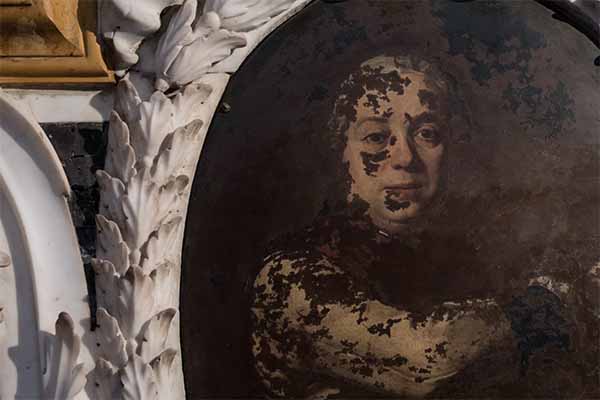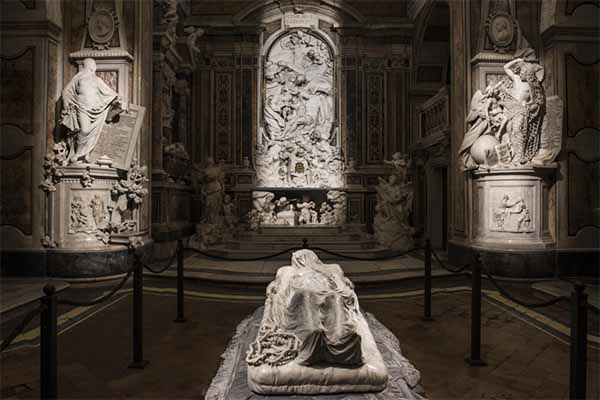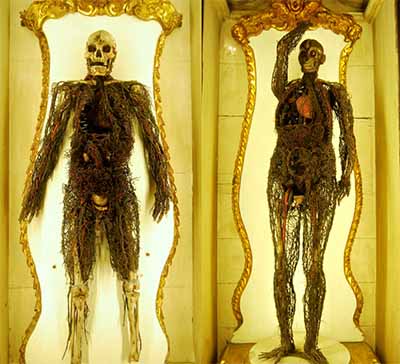Cappella Sansevero : Mysteries in the Heart of Naples

Raimondo di Sangro was born on January 30, 1710 in Naples, one of the great European capitals of the time, the offspring of a family that prides itself on being from the lineage of the founder of the Holy Roman Empire himself, Charlemagne. Motherless at the age of 1, abandoned by his father who takes the habit of a monk and loses interest in his fate, the young prince grew up with his grandparents, before being educated in Rome in a boarding school of Jesuits where he shows his sagacity and quick-wittedness on several occasions. He returned to Naples at the age of 20. Very quickly, he made people talk about him. Raimondo di Sangro is a cultured man, a great lover of art, a patron and a leading figure in Neapolitan cultural life. He is also a character with an overflowing imagination, naturalist and philosopher, passionate about alchemy, mechanics and sciences of all kinds. In short: the very example of the intellectual of the Enlightenment.
The palace of mysteries
But what happens at night in his palace? This is the question the Neapolitans ask themselves, alerted by unusual noises and odors, disturbing lights and suspicious comings and goings. Very quickly, his laboratory became the most legendary place in the city and the popular imagination attributed to him incredible inventions, such as the “eternal light”, a flame which burns indefinitely while consuming minute quantities of a fuel of its invention, obtained, it is said, by crushing human skull.
Cappella Sansevero : The legendary family chapel

In the 18th century, the Chapel of the Princes of Sansevero was enriched considerably, thanks in particular to Raimondo di Sangro who gathered around him the greatest artists of the time.
The prince is passionate about laboratory experiments and himself prepares the mixtures and solvents which give shine and resistance to the works of painters. One of the frescoes in Cappella Sansevero, Monument to Raimondo de' Sangro, is a dazzling proof of this: this work has not undergone the slightest restoration, the colors have kept their freshness for nearly three centuries, and this thanks, it seems, to the prince's preparations, the formulas of which have still not been discovered today.
As an alchemist, Raimondo often practices the art of “dissolving and coagulating” matter, so much so that he manages to obtain a particular type of mastic which, used for friezes, capitals and sculptures, gives remarkable results.
The life-size statues that are kept in Cappella Sansevero seem to have been made with a technique that remains mysterious.
Anatomical machines

Mysterious for some, vulgar models for others, the two figures who have been found for centuries in the cellars communicating with the chapel fuel rumors. There is a room where two large display cases are kept where what we call “anatomical machines” are kept, two skeletons covered with a dense “tissue” of veins and arteries, solidified and preserved, it is said, thanks to a metallization process invented by the Prince of Sansevero himself and whose formula has still not been discovered. He is rumored to have injected an alchemical substance into the still living bodies of two of his servants, which would have destroyed their bodily envelope while leaving the veins and arteries, and even the capillaries intact. However, some claim that these are two skeletons - that of a man and that of a pregnant woman - clad in simple threads of colored wax. What is certain is that the prince shows a very keen interest in alchemy and human anatomy in the hope - it is said - of becoming immortal. A quest which seems, on the contrary, to have led to his death ...
Fatal experiments
According to the story of Benedetto Croce, Italian philosopher and historian, the prince, after discovering a prodigious elixir capable of giving life back to those who lost it, would have liked to experience it on himself. This is why he allegedly ordered two of his servants to cut his body into pieces and lock it in a trunk, while awaiting its "rebirth". Someone, however, would have opened the trunk sooner than expected, and the prince would have stood up half-dying, screamed, then collapsed ... permanently.









































































































































































































































































































































